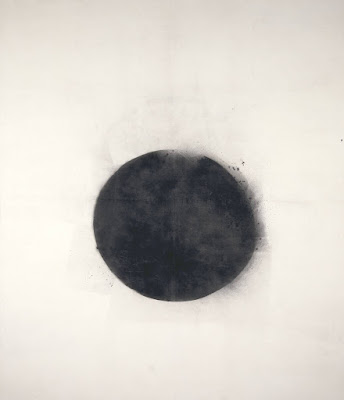Galleries are overwhelmingly visual. But people are not – the brain understands the world by combining what it receives from all five senses. Can taste, touch, smell and sound change the way we ‘see’ art?
Tate Sensorium is an immersive display featuring four paintings from the Tate collection. You can experience sounds, smells, tastes and physical forms inspired by the artworks, and record and review your physiological responses through sophisticated measurement devices.
The experience encourages a new approach to interpreting artworks, using technology to stimulate the senses, triggering both memory and imagination. On leaving, you will be invited to explore the rest of the gallery using the theme of the senses as a guide.
About Flying Object
Winner of the IK Prize 2015, Tate Sensorium is the creation of creative agency Flying Object, working with a team of collaborators: audio specialist Nick Ryan, master chocolatier Paul A Young, scent expert Odette Toilette, interactive theatre maker Annette Mees, lighting designer Cis O’Boyle, digital agency Make Us Proud, and the Sussex Computer Human Interaction Lab team lead by Dr Marianna Obrist at the Department of Informatics, University of Sussex.
The IK Prize is awarded annually for an idea that uses innovative technology to enable the public to discover, explore and enjoy British art from the Tate collection in new ways.
Artworks from the Tate collection
Tate Sensorium features four twentieth century British paintings from Tate’s collection of art. Flying Object and their team of collaborators have selected artworks that play with abstraction in different ways, all of which can be appreciated sensually in terms of their subject matter, use of shape, form, colour, style and your own imagination. Here are the four paintings that feature in Tate Sensorium.
David Bomberg, 'In the Hold' circa 1913-4
David Bomberg
In the Hold circa 1913-4
Oil on canvas
support: 1962 x 2311 mm frame: 1995 x 2355 x 63 mm
Presented by the Friends of the Tate Gallery 1967© Tate
View the main page for this artwork
Francis Bacon, 'Figure in a Landscape' 1945
Francis Bacon
Figure in a Landscape 1945
Oil on canvas
frame: 1628 x 1464 x 120 mm support: 1448 x 1283 mm
Purchased 1950© Tate
View the main page for this artwork
John Latham, 'Full Stop' 1961
John Latham
Full Stop 1961
Acrylic on canvas
support: 3015 x 2580 x 40 mm
Presented by Nicholas Logsdail and Lisson Gallery, London 2005© The estate of John Latham (noit prof. of flattime), courtesy Lisson Gallery, London
View the main page for this artwork
Richard Hamilton, 'Interior II' 1964
Richard Hamilton
Interior II 1964
Oil, cellulose paint and collage on board
support: 1219 x 1626 mm frame: 1425 x 1830 x 100 mm
Purchased 1967
© The estate of Richard Hamilton
View the main page for this artwork
Technology and the senses
Touch
Touchless haptics work by using focused ultrasound from an array of speakers that vibrate on the visitor’s hand. This will create a sensation of touch, and no gloves or special equipment is needed. Touchless haptics use technology developed by the company Ultrahaptics.
Hear
Directional audio uses ultrasound waves to direct very precise sound waves across distances in a very precise manner. Listeners outside of the audio area will not be able to hear it, while for those inside the channel, the effect is similar to listening to headphones. Directional audio systems will be provided by Hypersound.
Smell
Flying Object collaborated with IFF’s olfactory design lab and perfumery team to produce bespoke scents, many created using ‘living naturals’ materials - captured through a Tenax™ trap or through liquefied gas extraction.
Taste
Master chocolatier and food inventor Paul A Young has developed an edible product that stimulates a haptic taste experience in response to the textural, painterly qualities and potential meanings of a specific artwork.
Respond
Visitors will be given the option to measure their body’s response to the experience using wearable devices. These wristbands measure electrodermal activity, a measure of perspiration, which indicates how calm or excited wearers are. Tate Sensorium will be using E4 wristbands, provided by Empatica, who offer medical quality sensing.
Lighting equipment is kindly provided by Rosco.
Information for visitors
Tate Sensorium is a free 15-minute experience. Free tickets are available on a first-come first-served basis from the Information Desk at Tate Britain’s Millbank Entrance on the day of your visit.
Tate Sensorium is recommended for adults and children aged 8 and above. Tate asks that parents do not take small children into the display with them.
Please note that visitors will be given a food product to consume as part of the experience. This product contains soya.
As part of the experience, visitors will be asked to wear wristbands that measure their physiological responses to sensory stimuli (skin conductivity and heart rate). This poses no risk to health. All data collected from visitors is anonymous. The data is used to give individualised feedback to visitors at the end of the experience and will be made available to scientists researching sensory interaction at The University of Sussex. By participating in this voluntary experience and completing a digital questionnaire at the end, visitors over the age of 18 give consent for their anonymous data to be used in this way. Data from wristbands worn by visitors under the age of 18 will be deleted immediately after they leave the experience.







No comments:
Post a Comment
Note: only a member of this blog may post a comment.